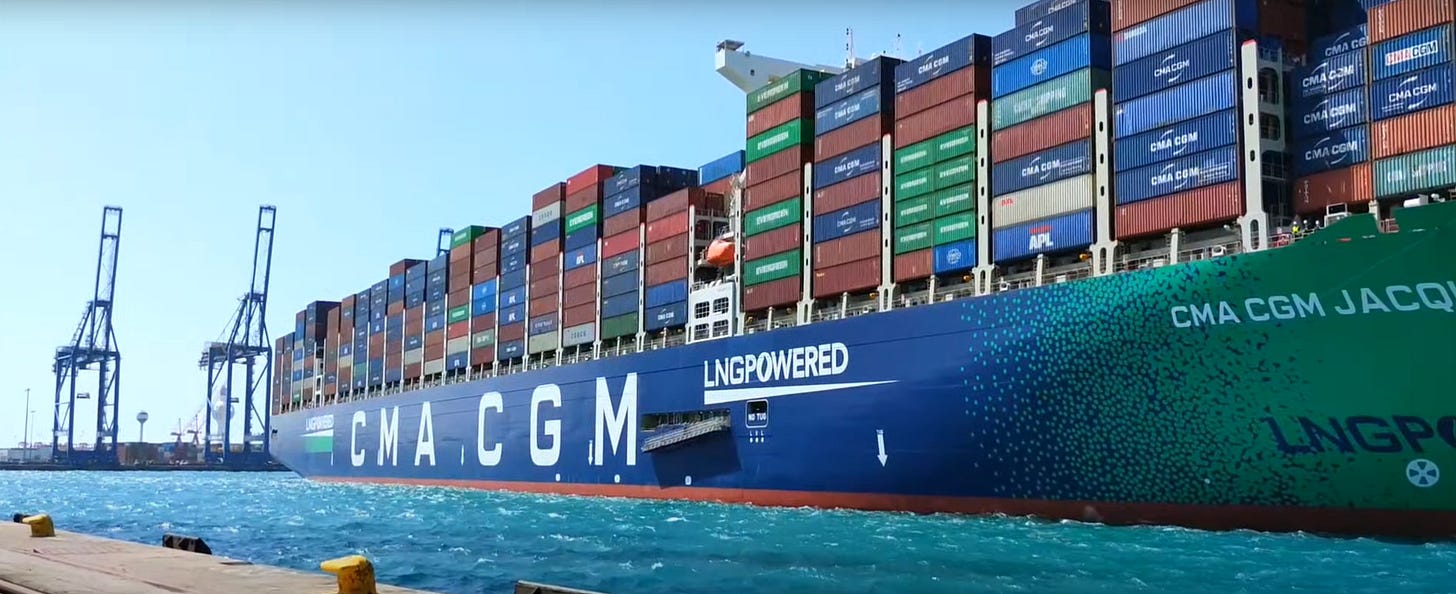🔥Why CMA CGM & TotalEnergies Choose LNG for Shipping?
🌍Inside CMA CGM’s LNG strategy driving shipping’s low-carbon transition
🎖️Subscribe /✨Sponsorship /📊Exclusive Reports /🙏Rate us /🎁Send Gift
🔥 Greetings, Maritime Mavericks!
Imagine standing at the Port of Rotterdam, Europe’s busiest gateway. Towering cranes rise into the sky. Container giants roar as fuel hoses connect to massive ships. But this time, something’s different.
Instead of heavy fuel oil, liquefied natural gas (LNG) flows beneath the deck — cleaner, colder, and central to a new chapter in maritime energy.
Two French giants — CMA CGM, the shipping powerhouse, and TotalEnergies, the global energy leader — are rewriting the rules of marine fueling. Their 50/50 joint venture isn’t just another deal. It’s a pivot in how the world’s ships move.
🚢 The Big Question: Why LNG, Why Now?
⚡ Rotterdam Becomes the Nerve Center
📦 Inside CMA CGM’s Net-Zero Playbook
🧠 The Strategic Edge
🏅 Maritime Analytica - Big Picture
Ready to discover? Let’s go…
🚢 The Big Question: Why LNG, Why Now?
For decades, ships relied on heavy fuel oil — cheap but dirty. As climate rules tighten and customers demand greener solutions, LNG emerges as a bridge fuel:
Cuts CO₂ emissions by up to 20% compared to oil
Reduces nitrogen and sulphur oxides, improving port air quality
Unlocks synergy with biomethane and synthetic gas for even bigger gains
But LNG isn’t just about fuel. It’s about control — of logistics, costs, and carbon footprints.



